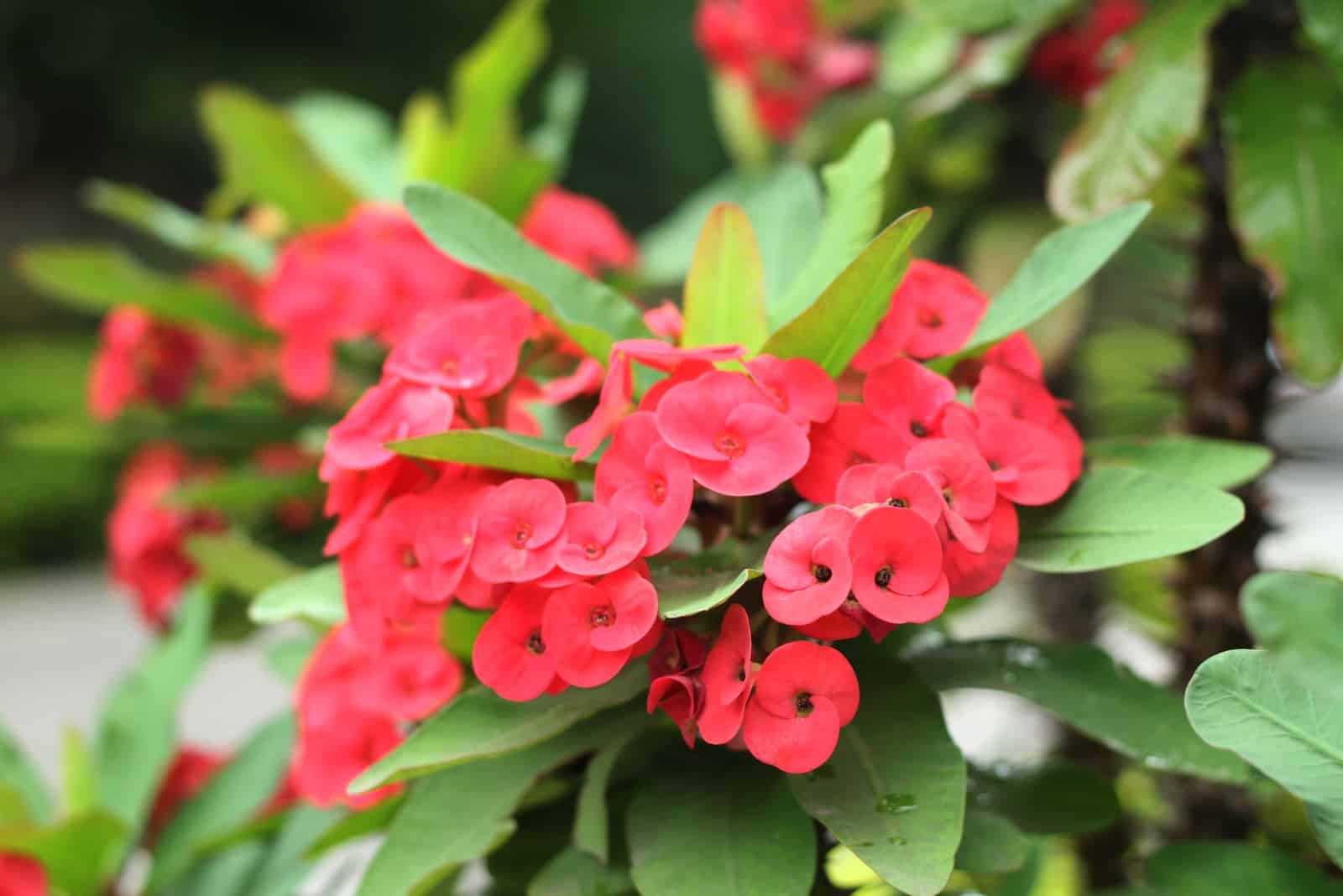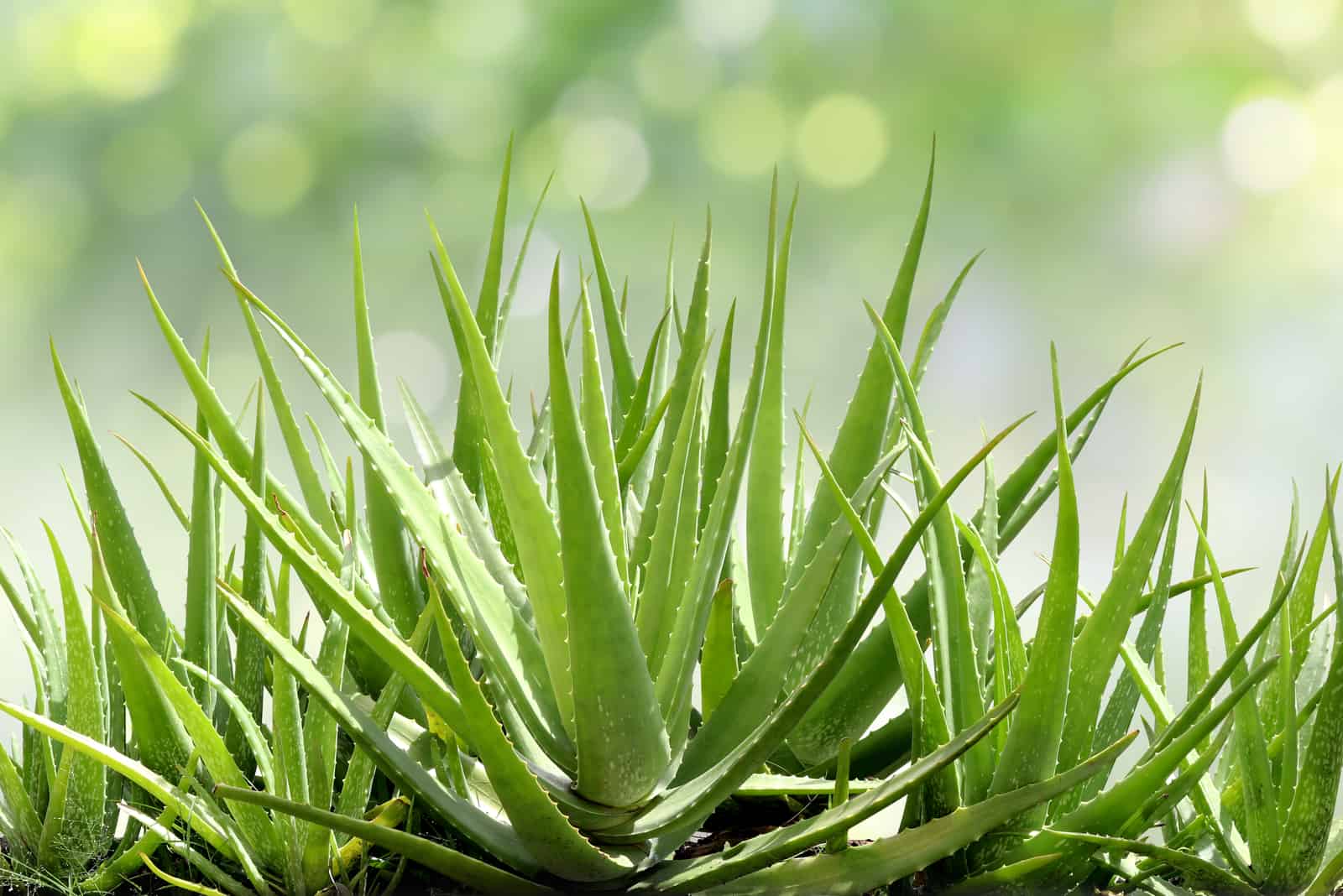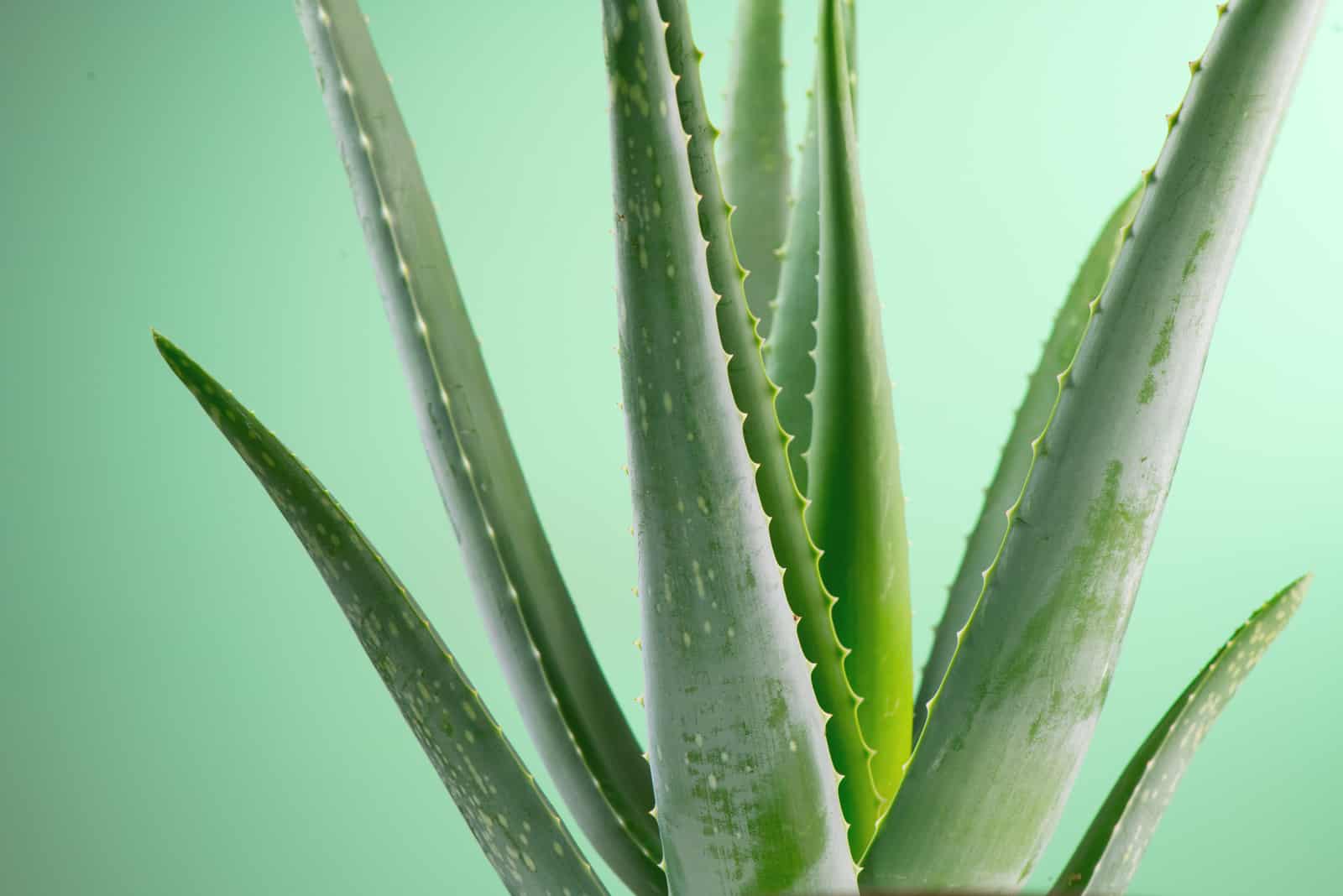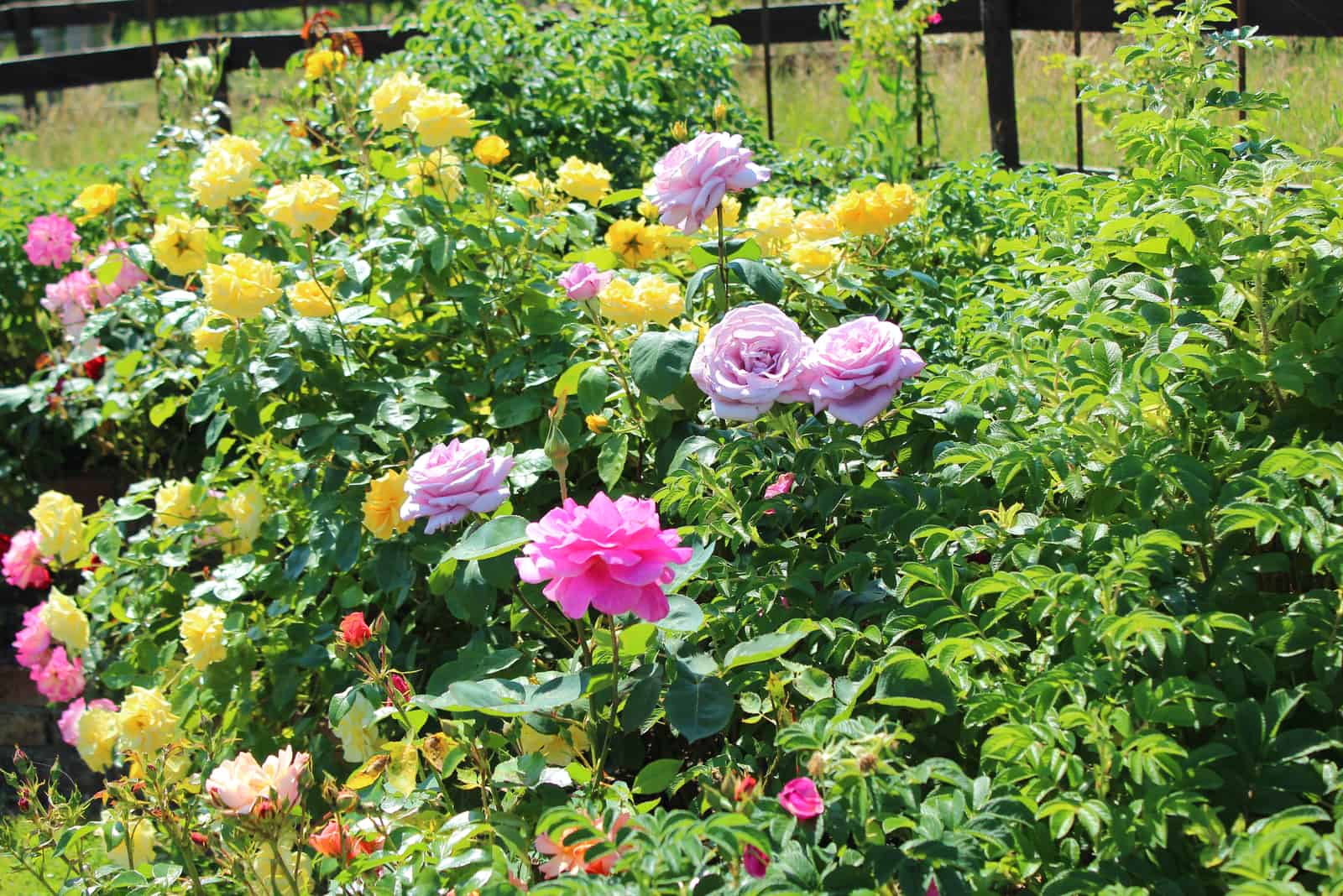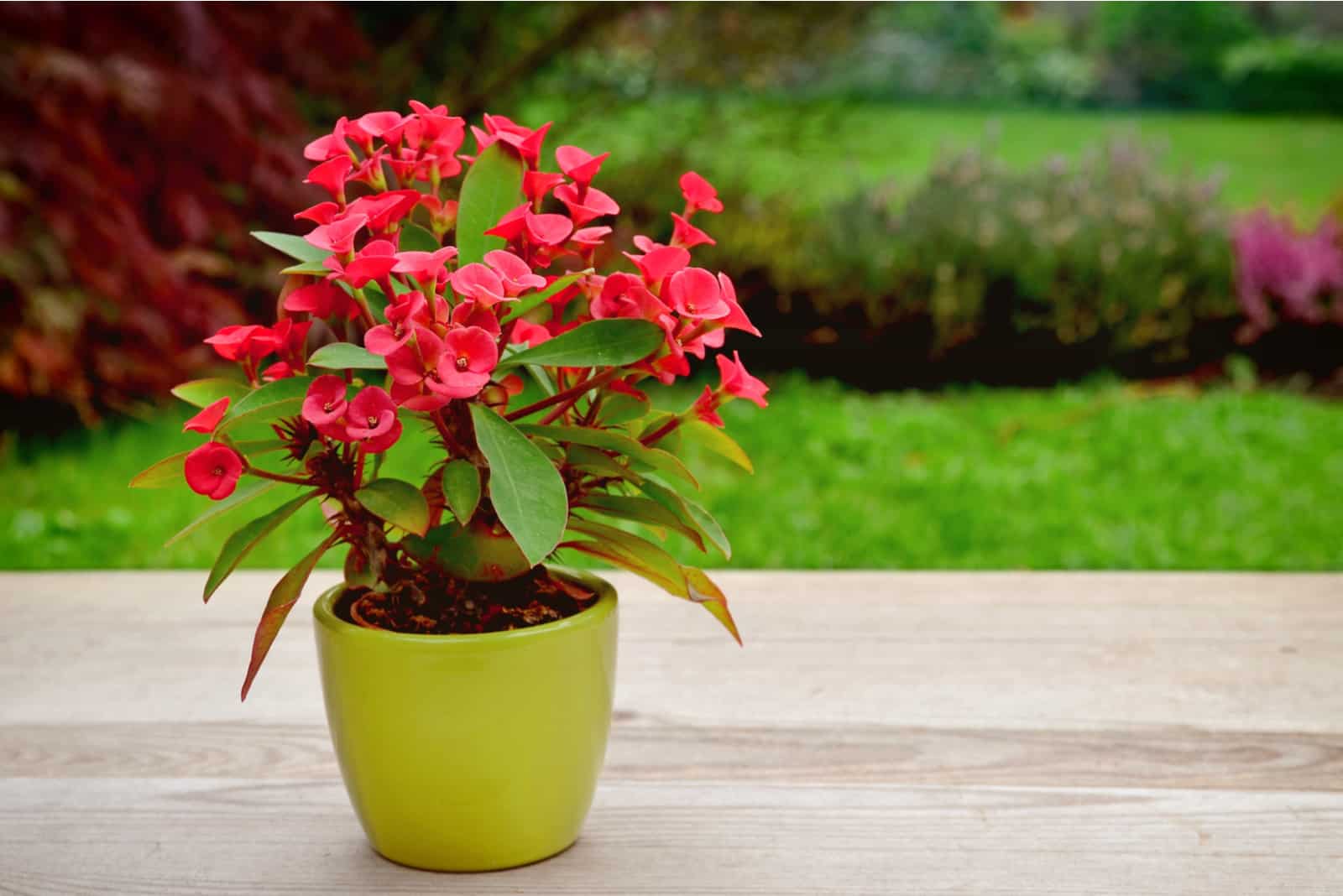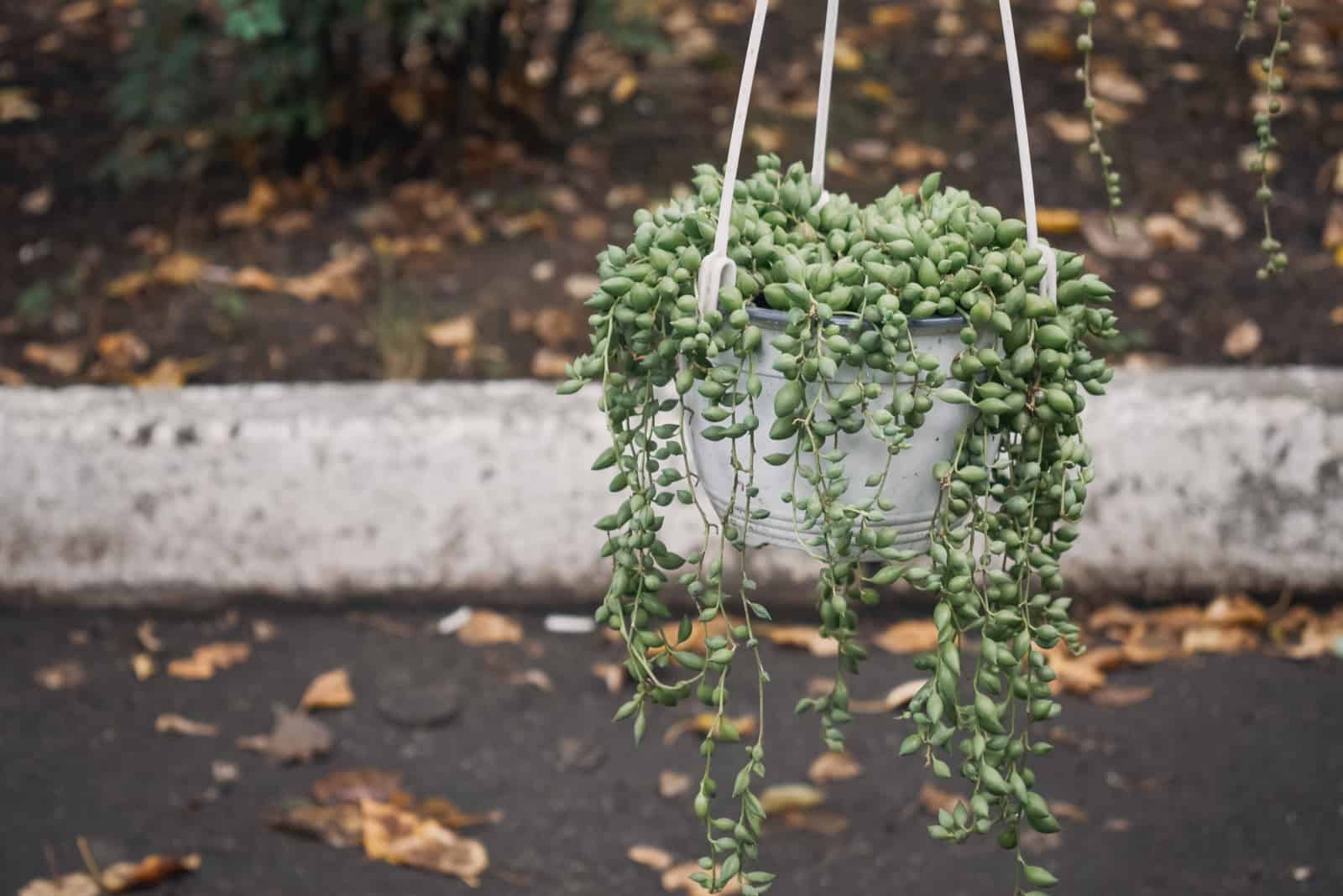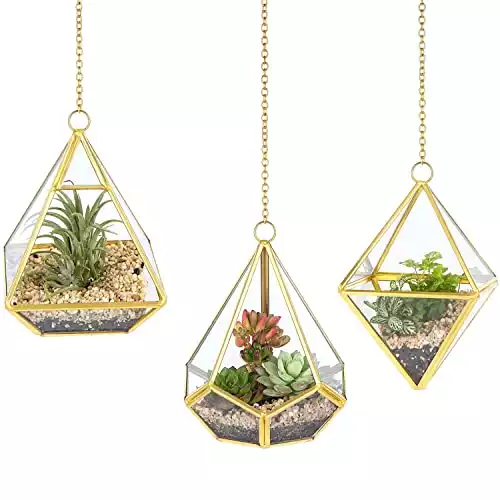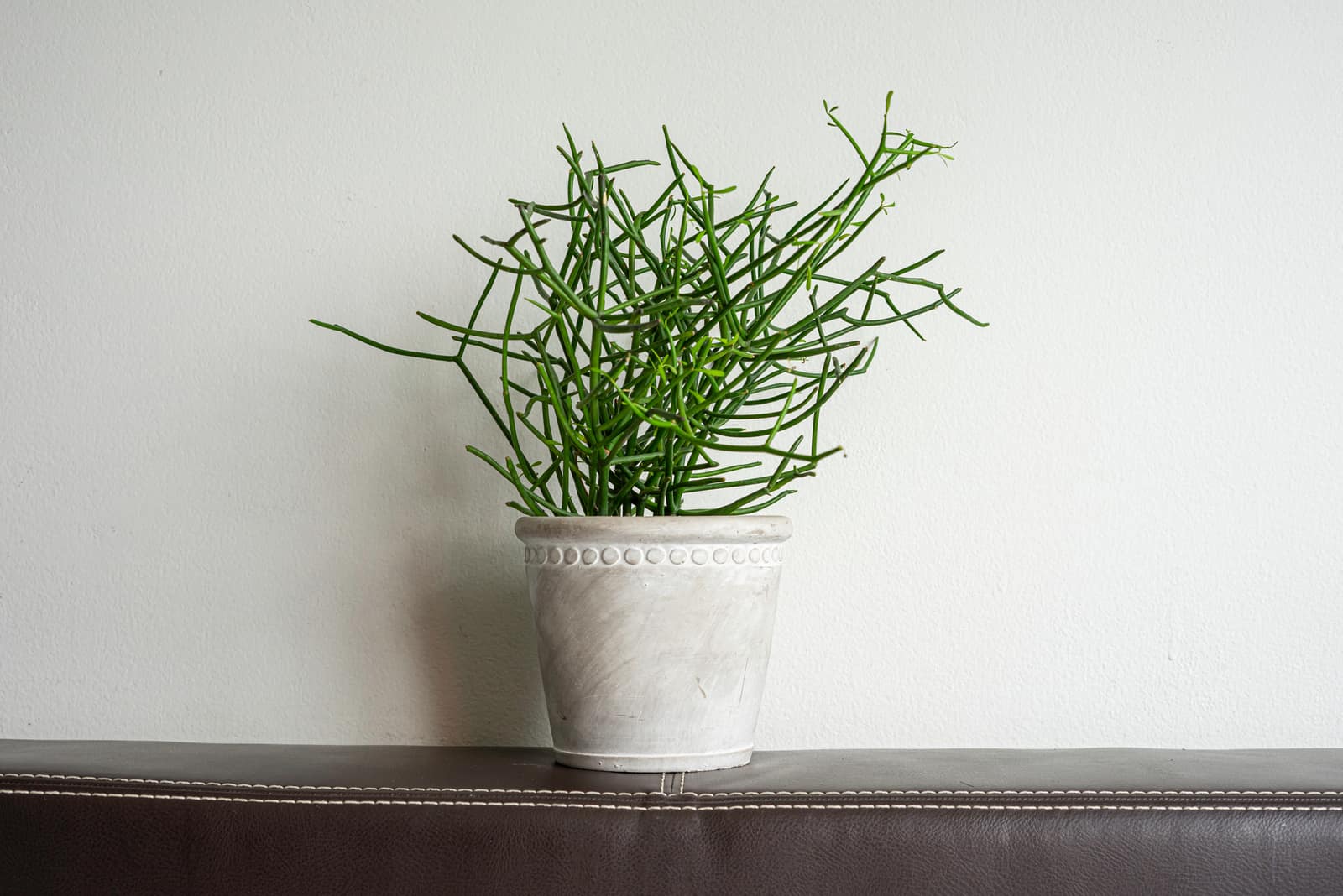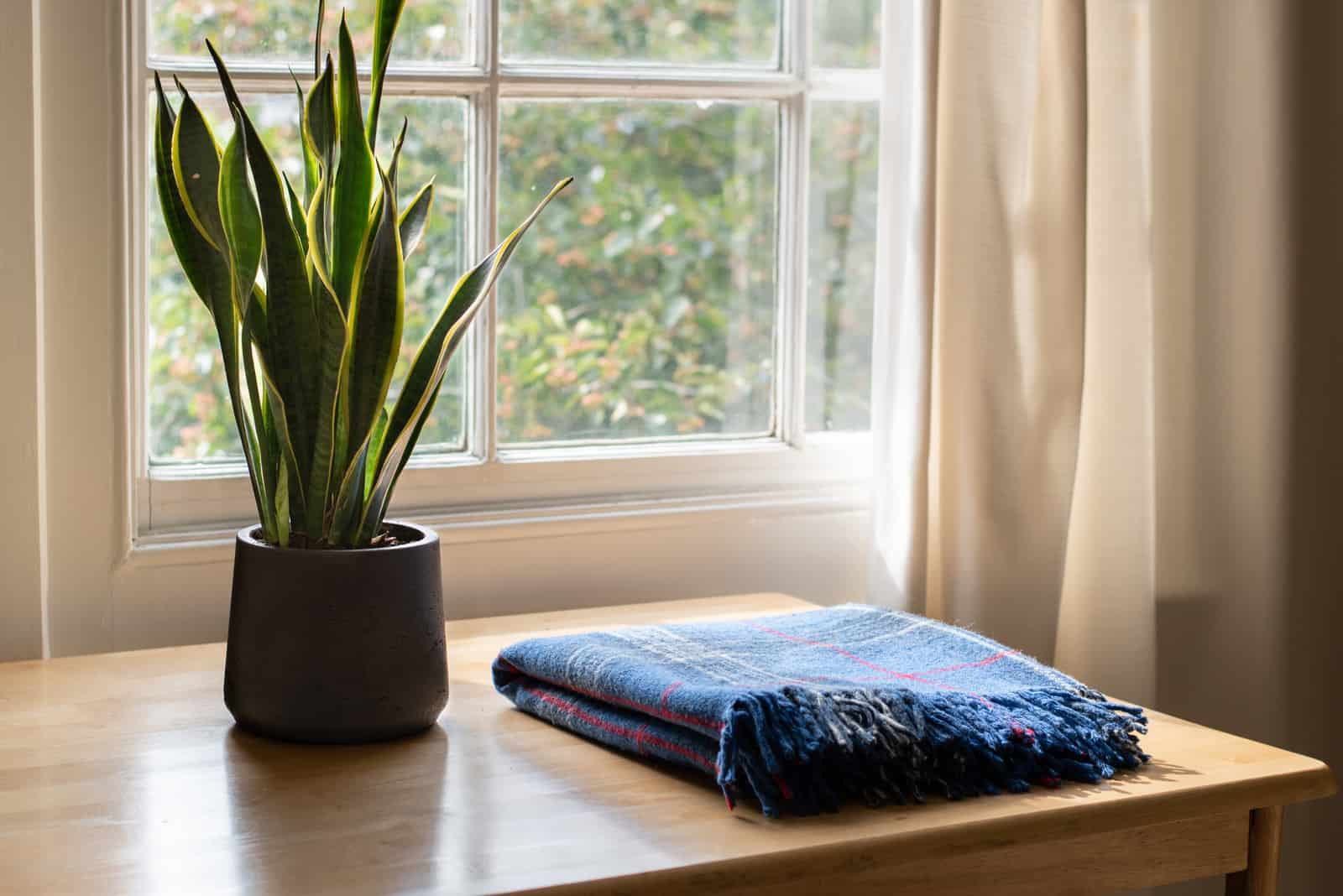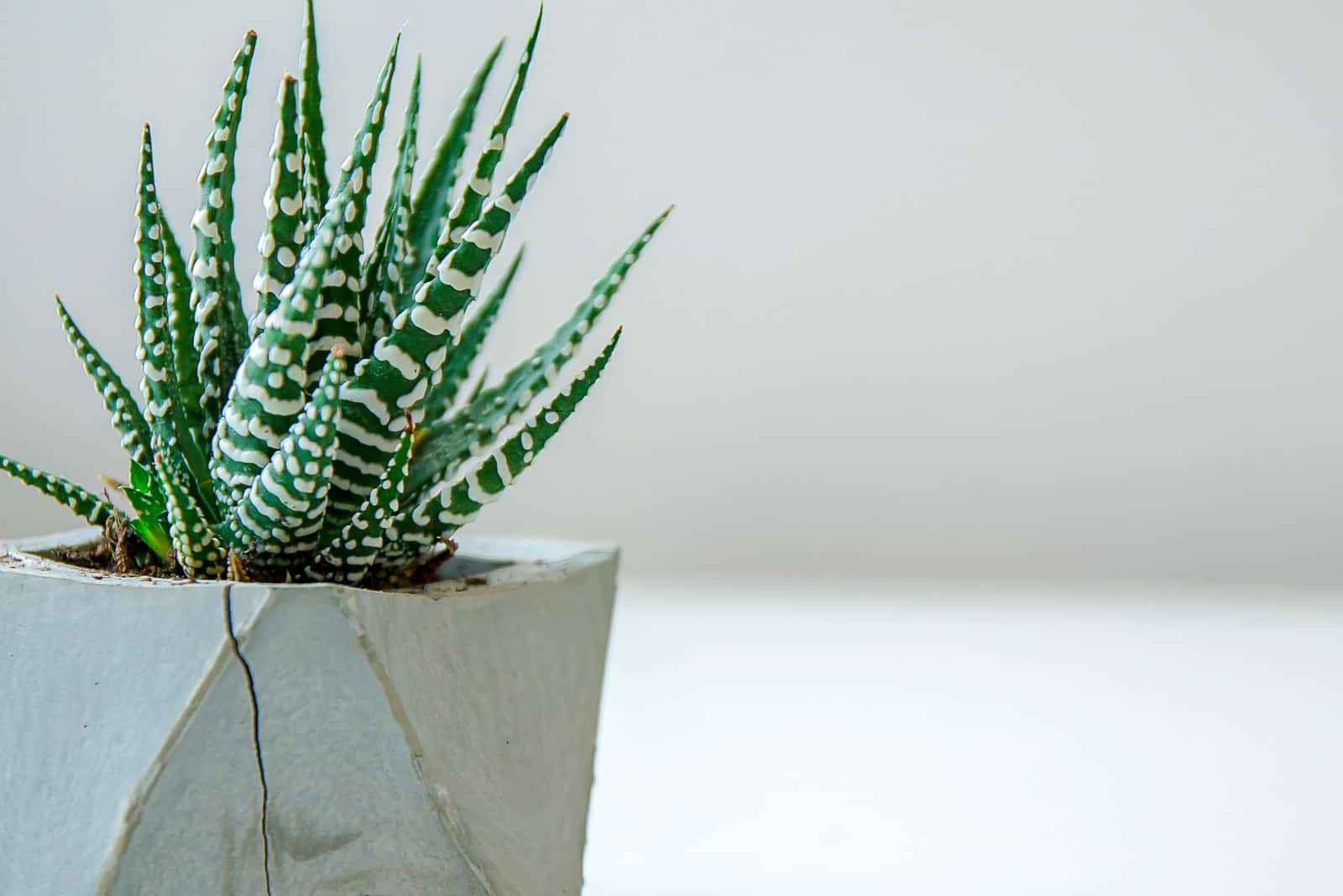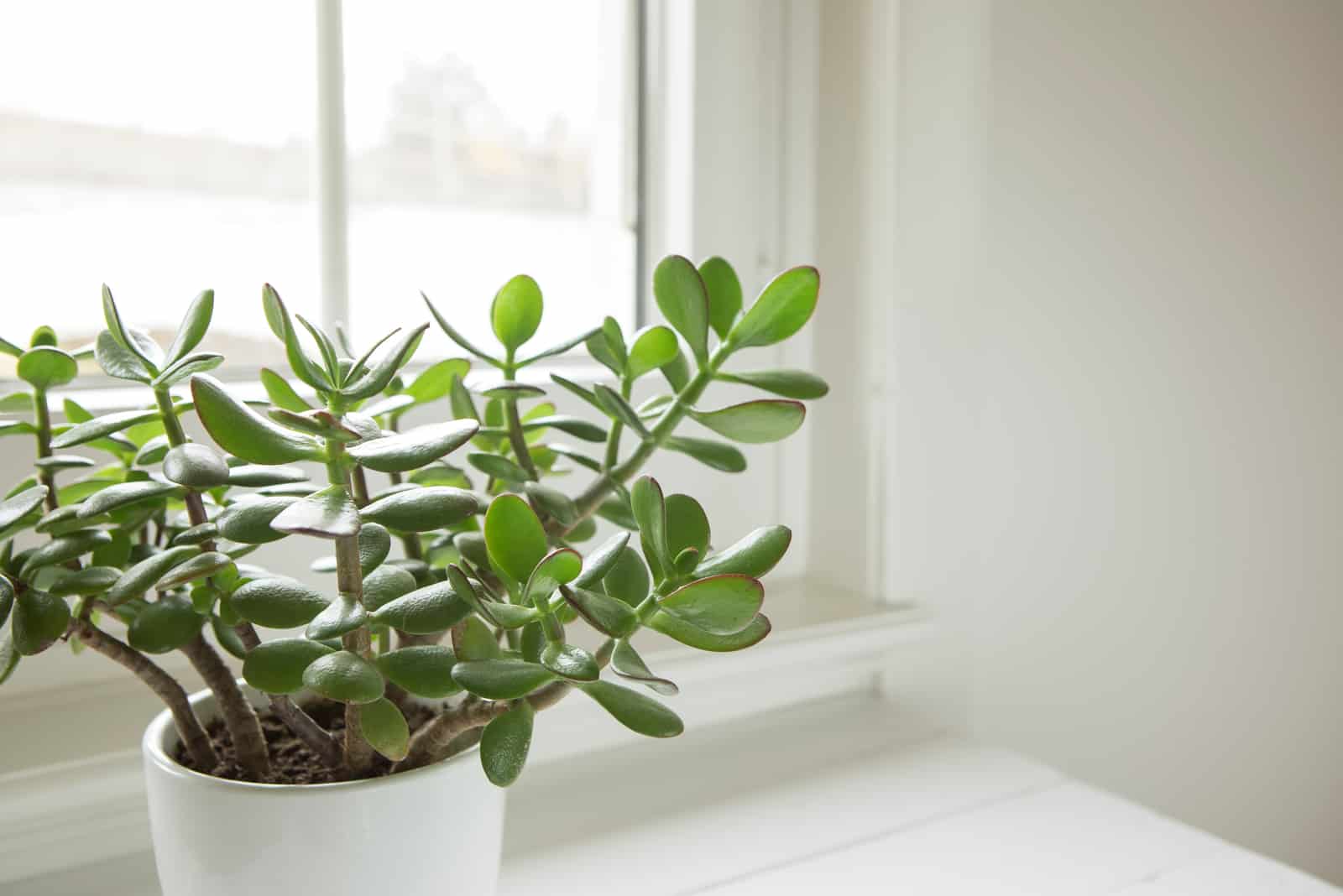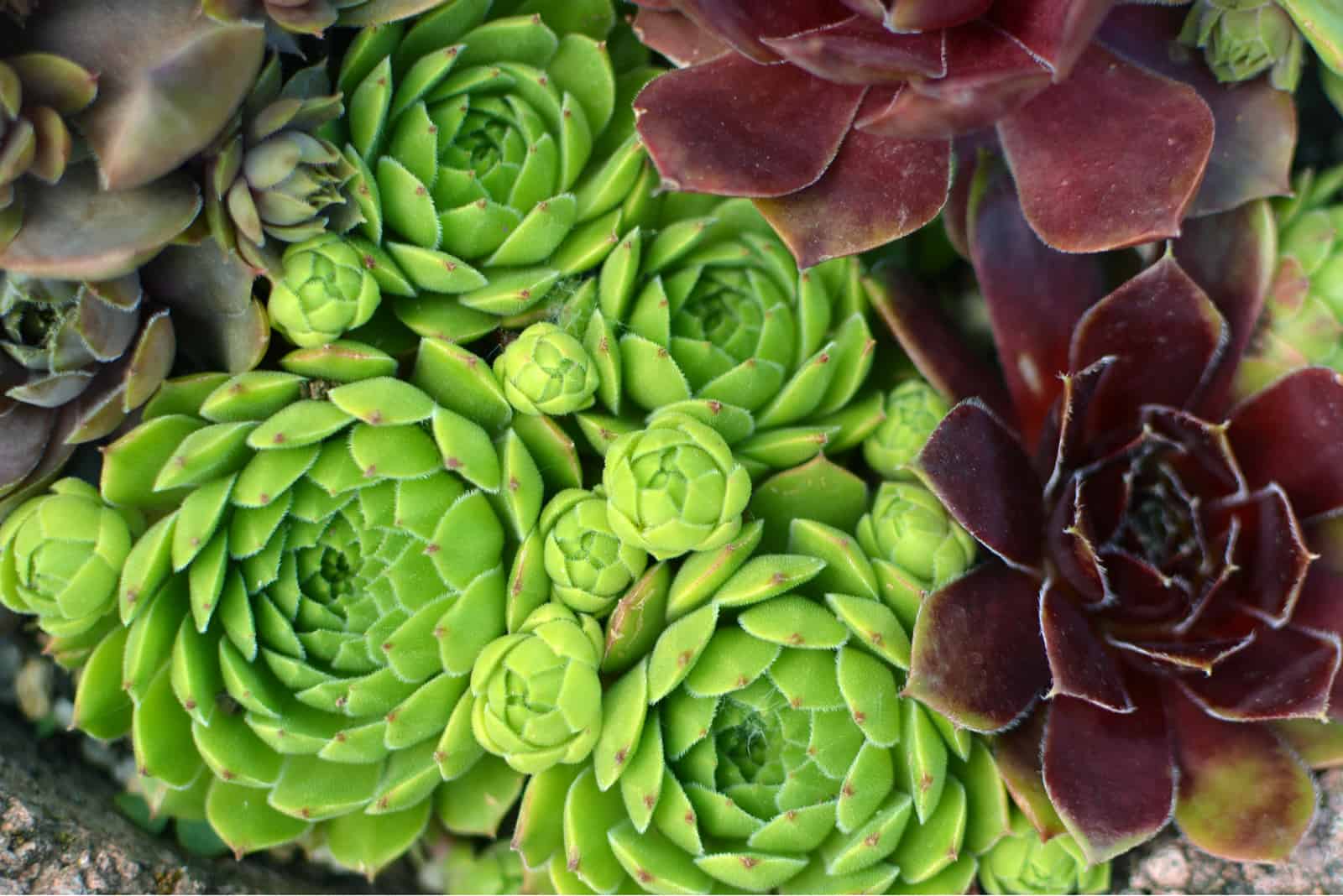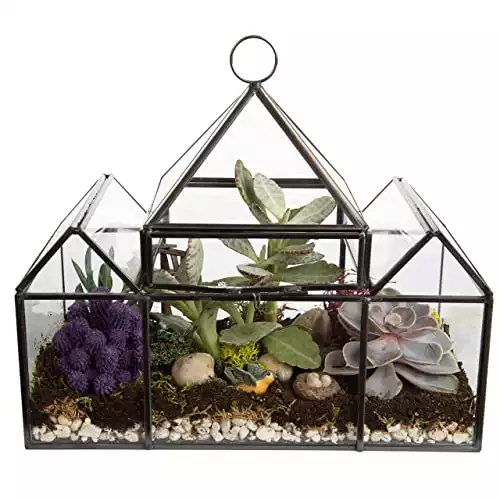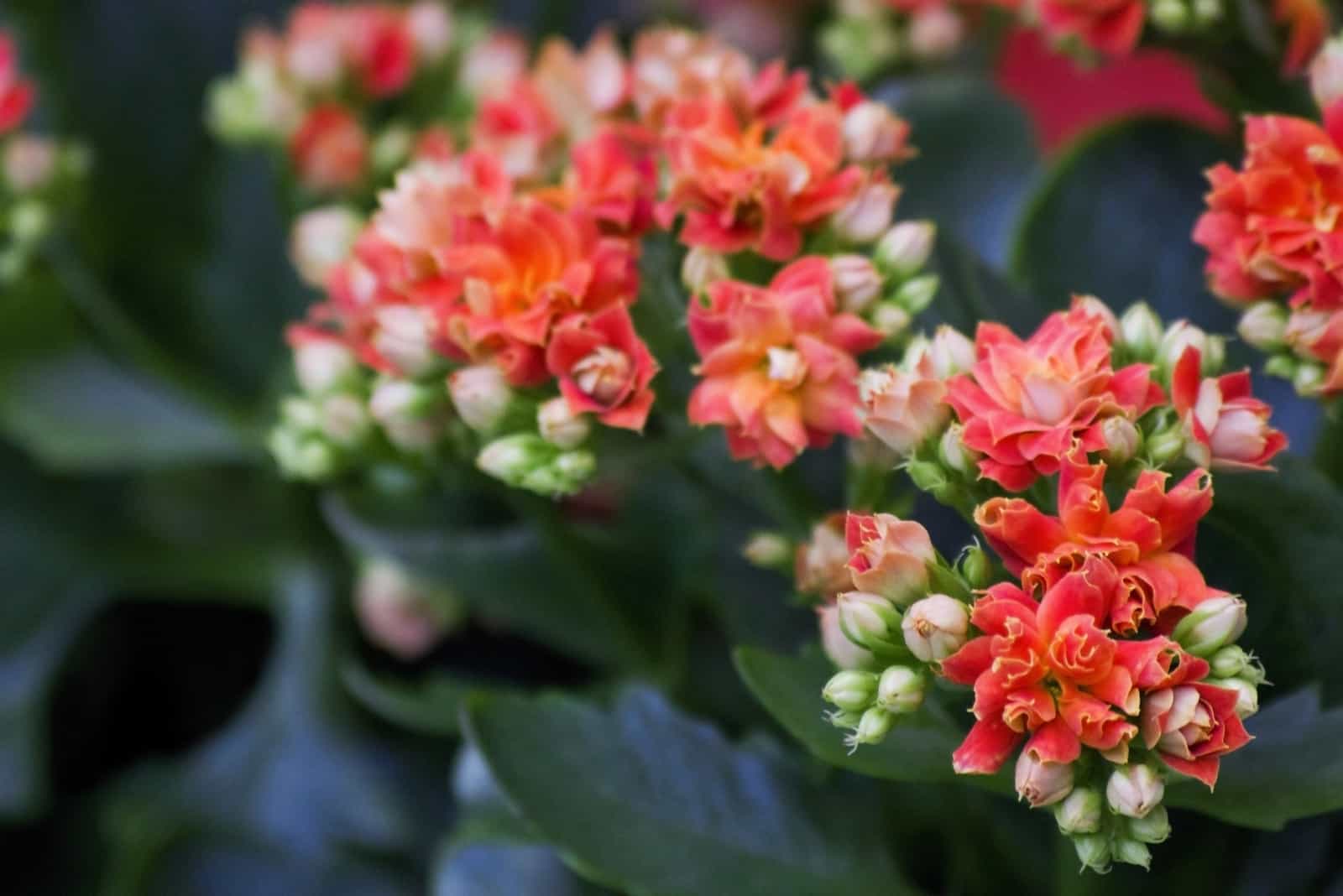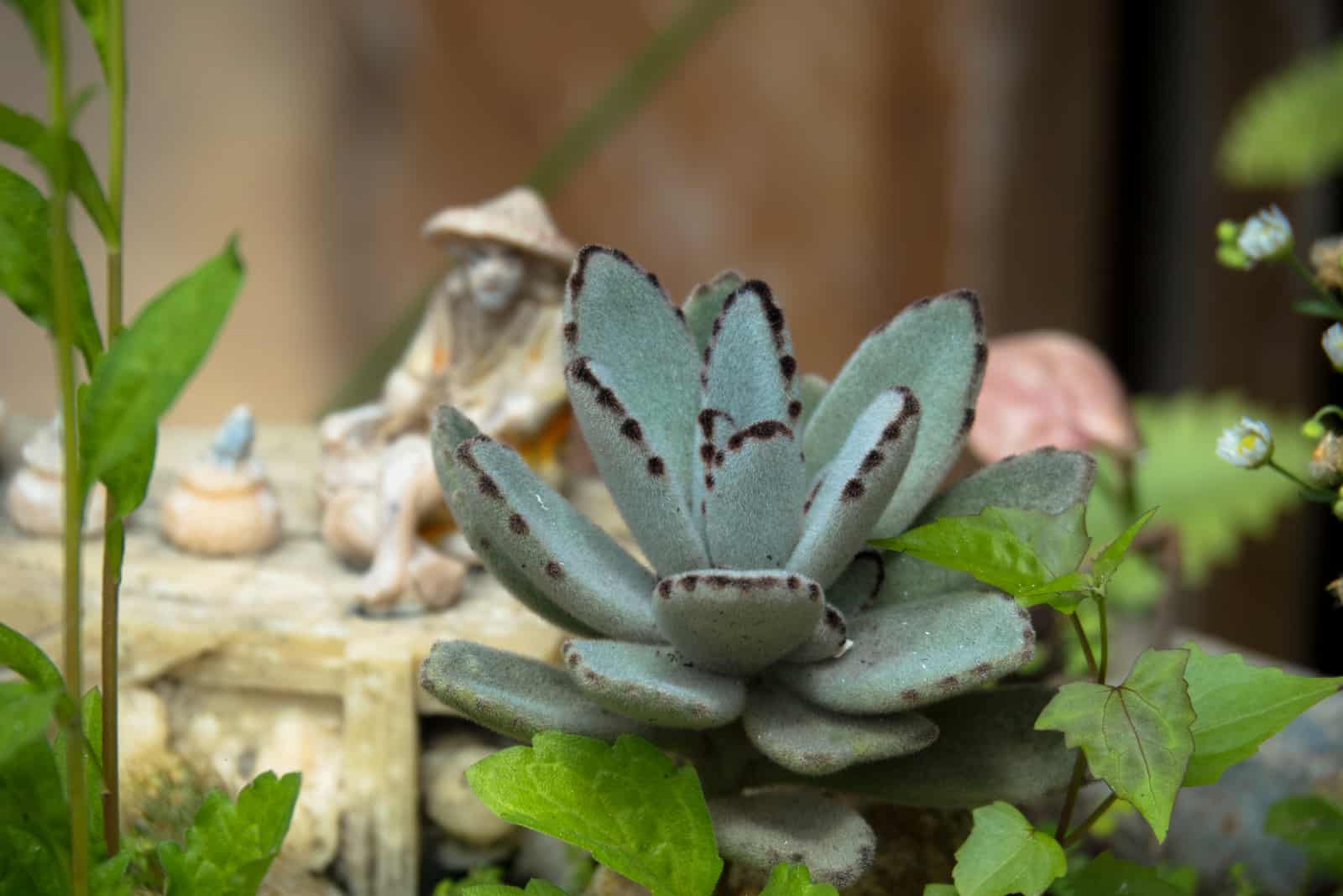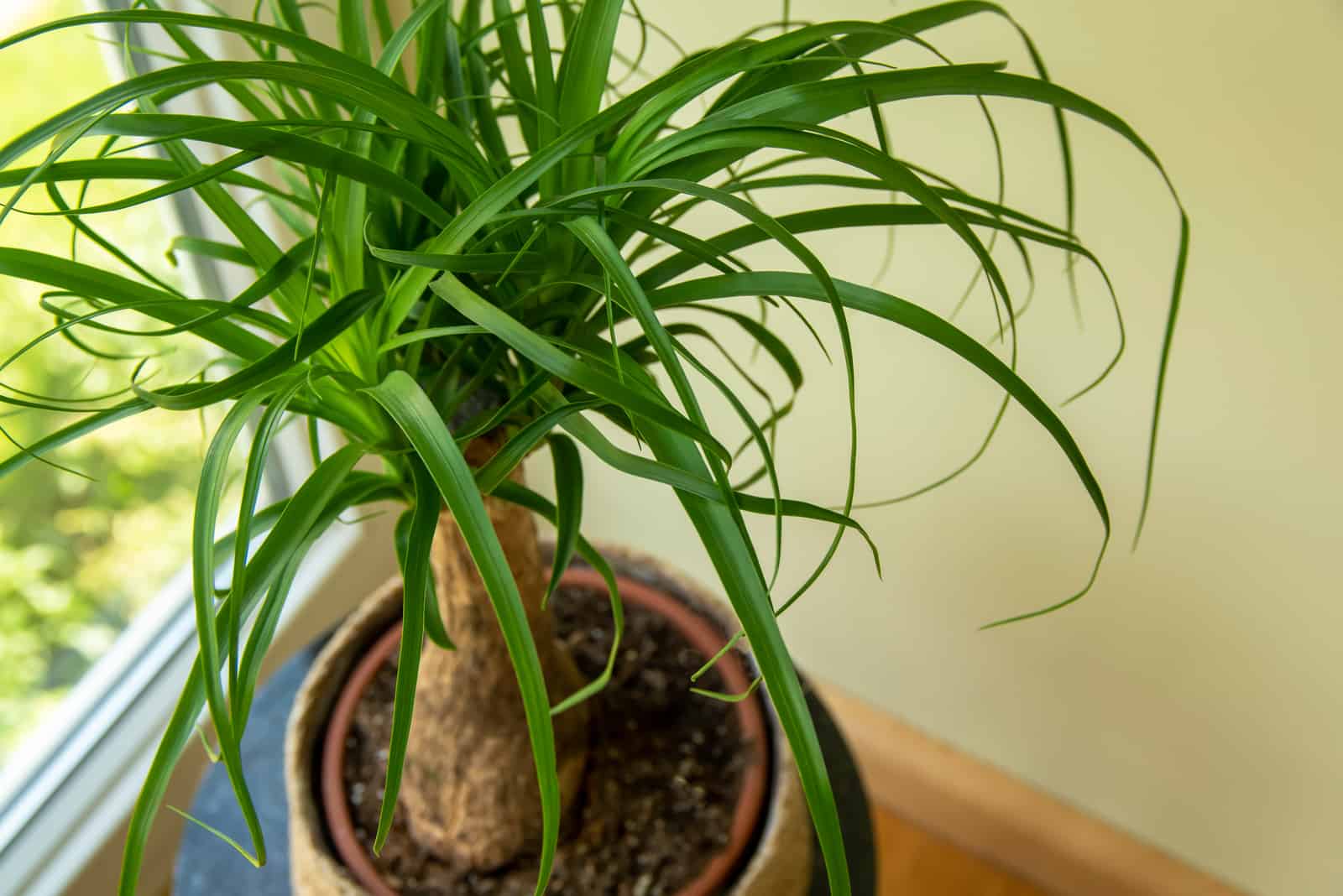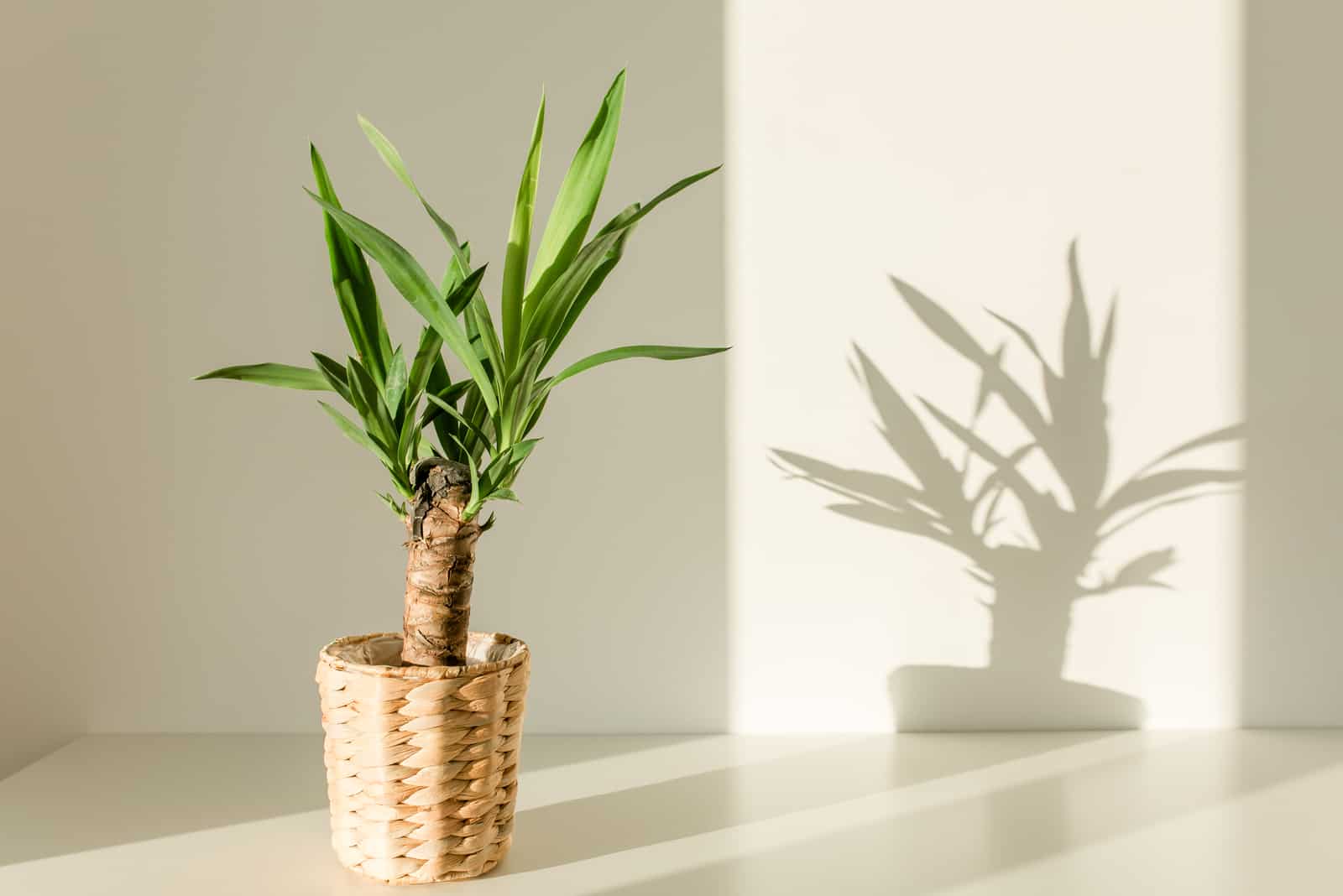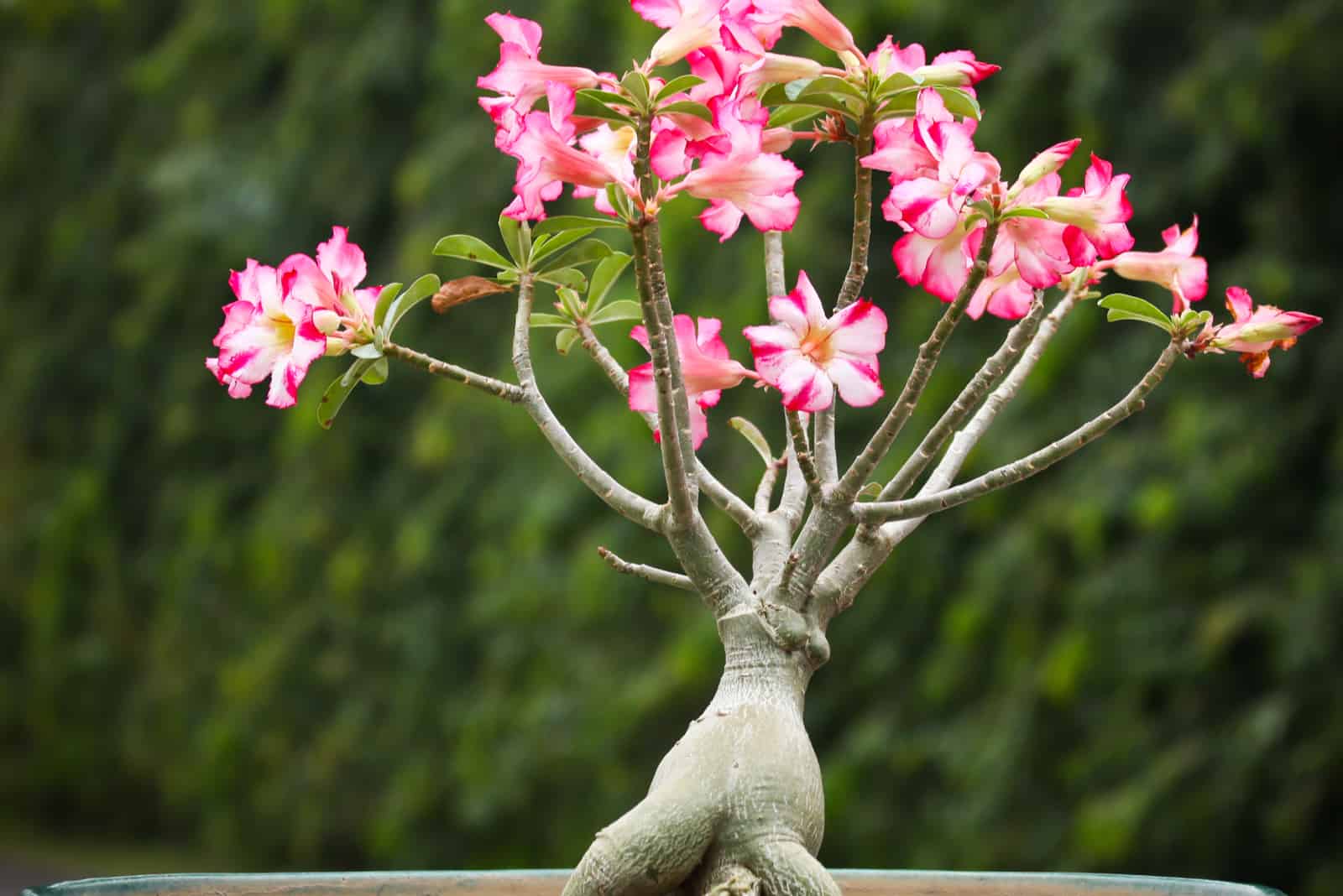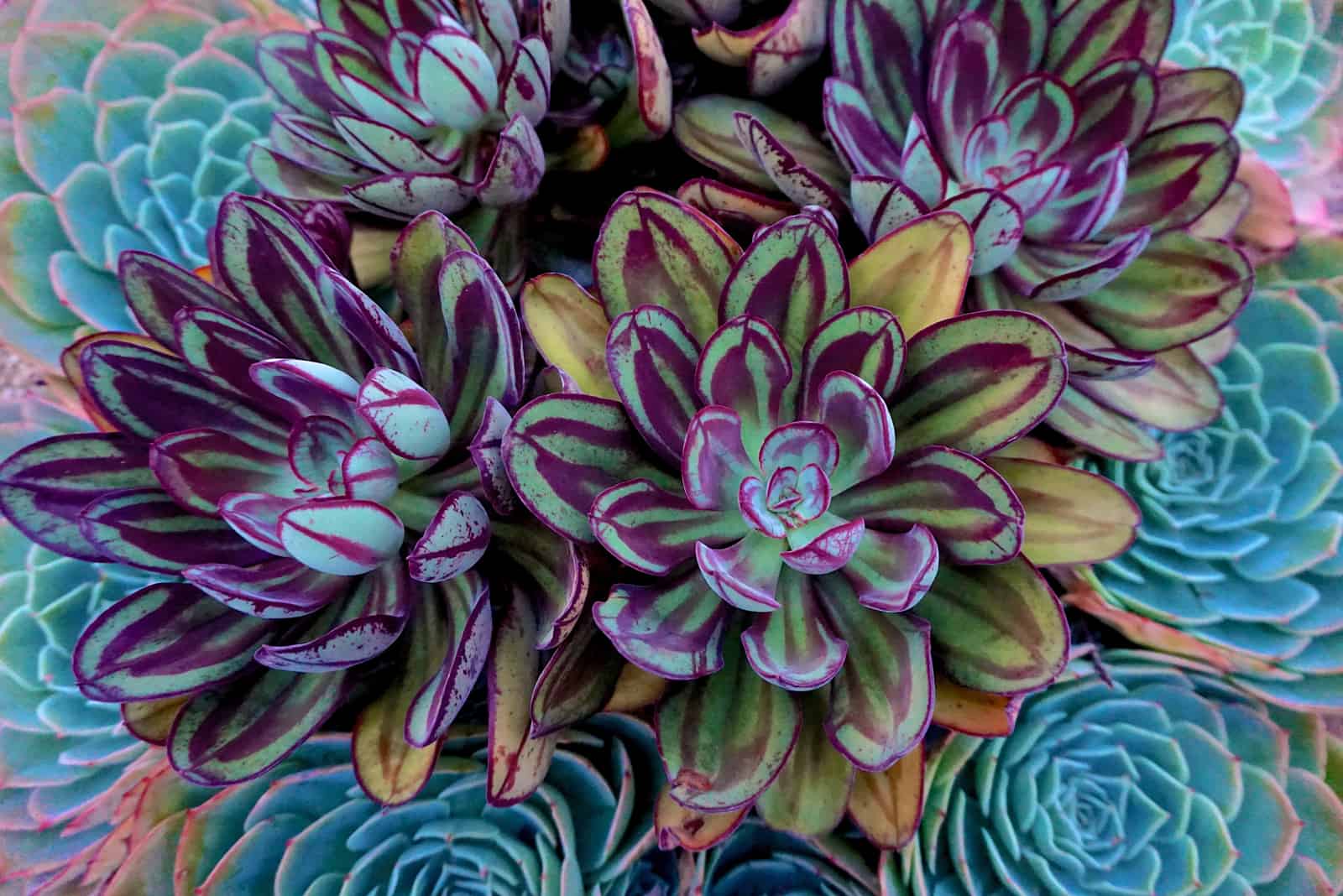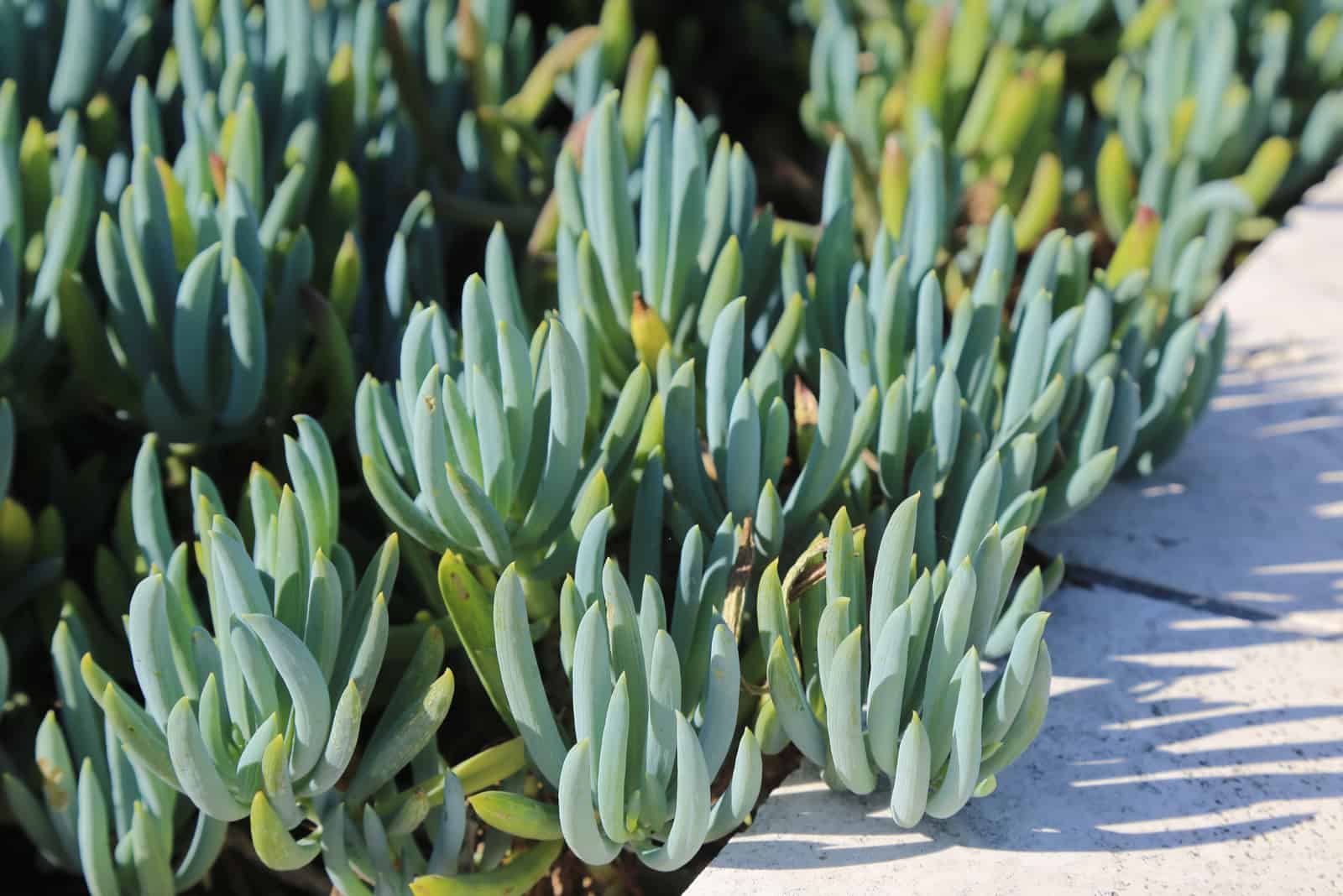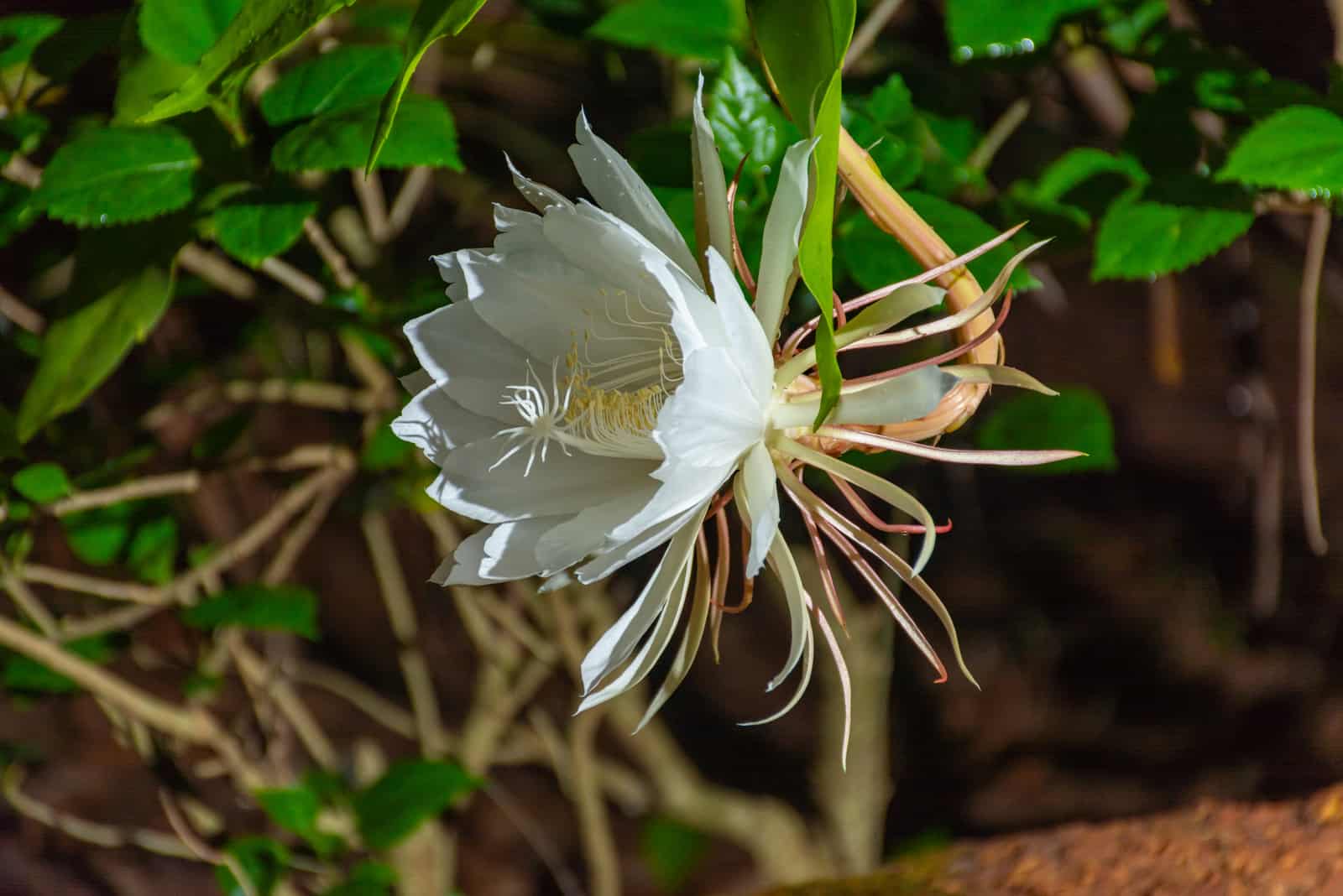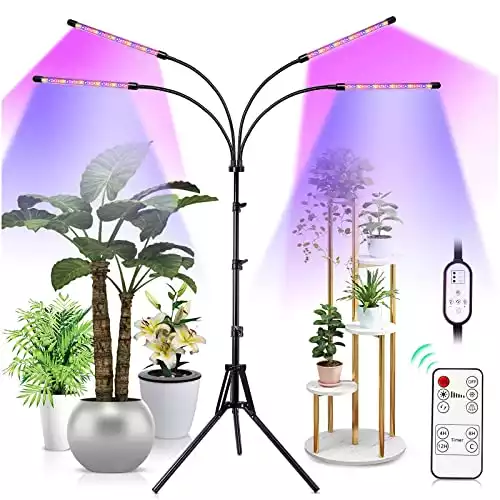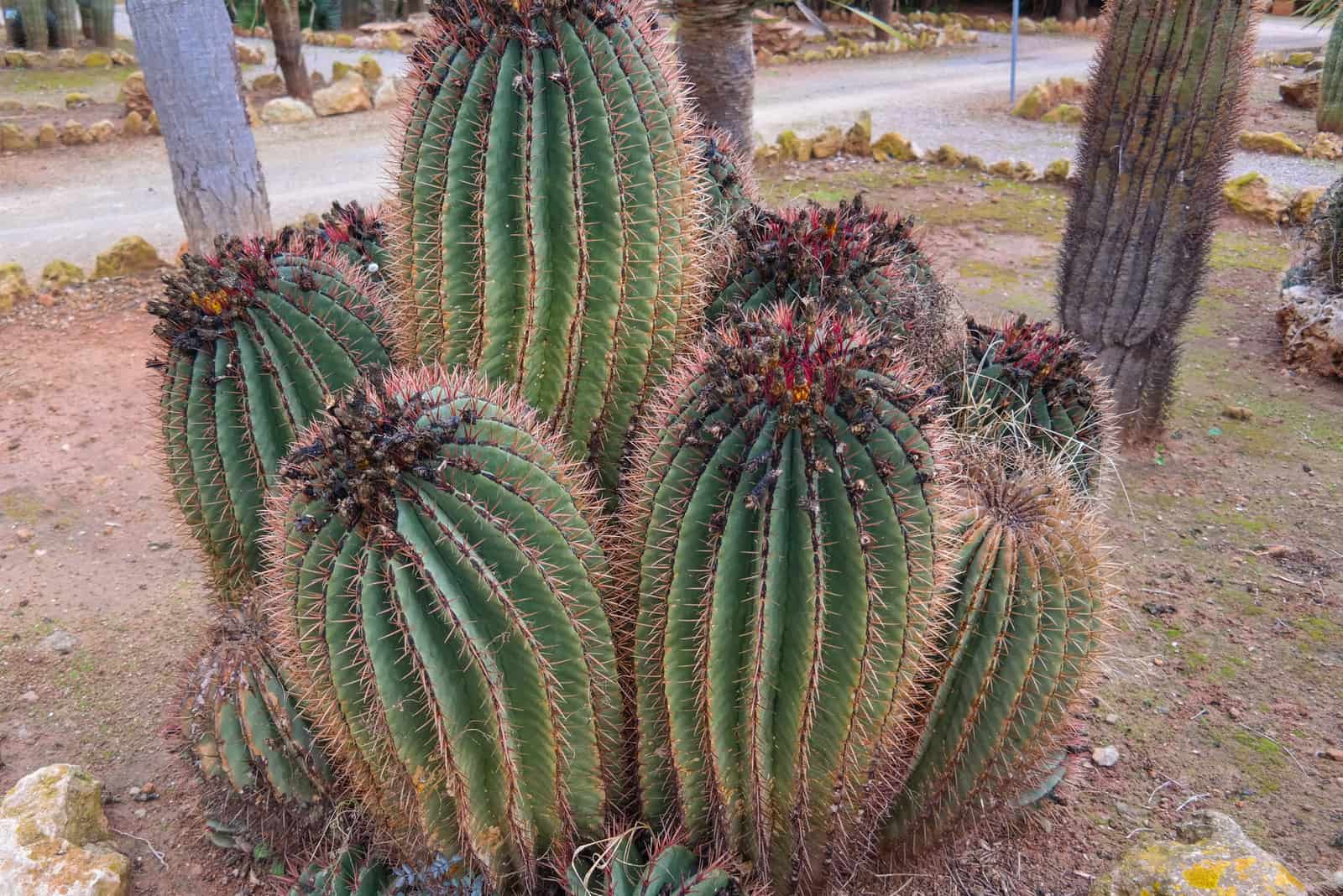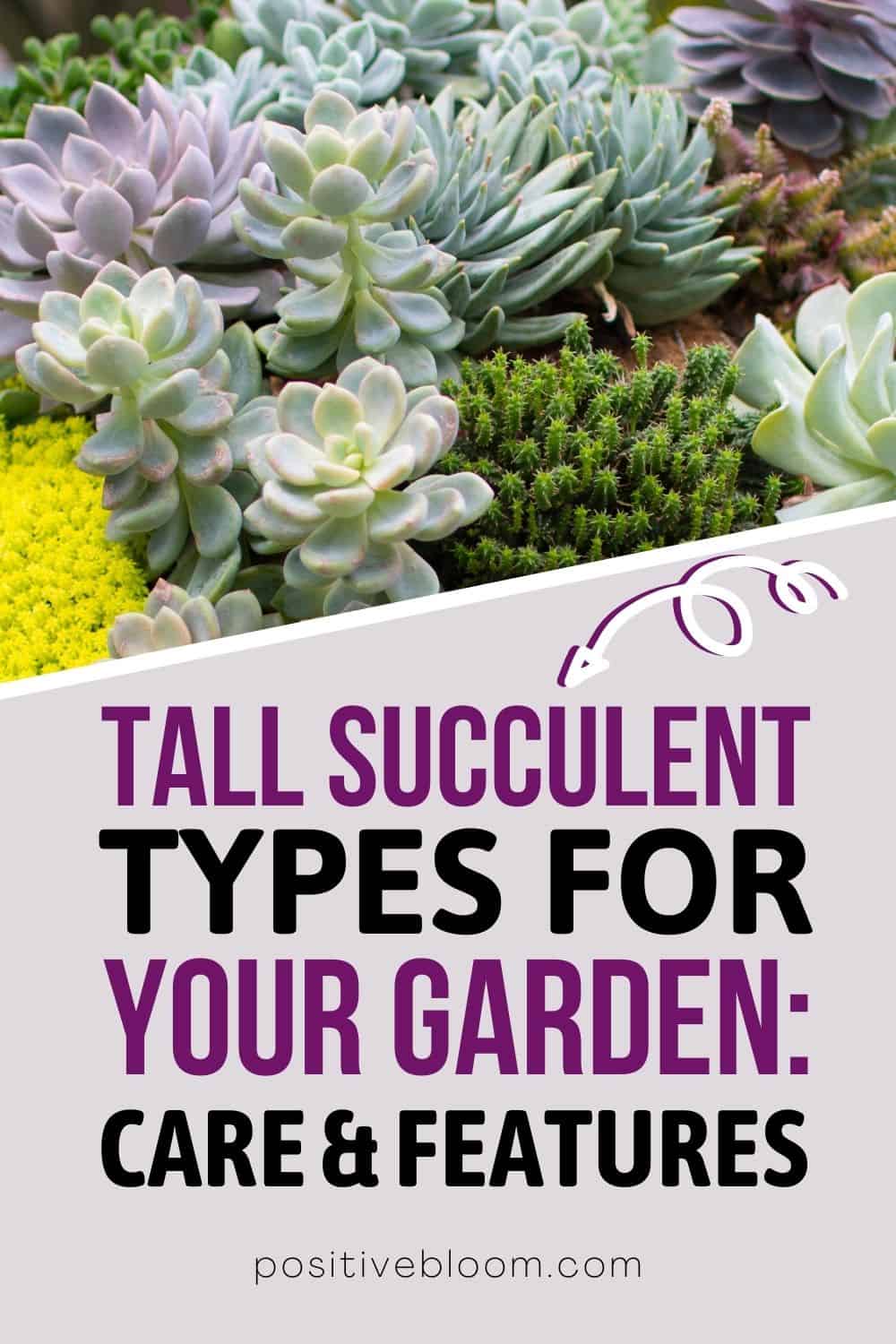Positive Bloom is an Amazon Associate and we earn from qualifying purchases through these links at no extra cost to you.
Agave, crassula, sedum, stonecrop, aloe, and cacti – these tall succulent types can be found in almost every home, office or garden, but not many people know that they are actually succulents.
Succulents store water in their stems and foliage and are native to regions with arid climates. This characteristic allows them to keep their good looks without regular watering.
Aesthetics and pickiness make these plants an excellent option for both indoor and terrace gardens and flower and rock gardens.
Tall Succulents: General Features
During the summer and rainy seasons, succulent plants intensively store water in order to survive the dry subequatorial winter.
Their exotic form and bright flowers are extraordinarily attractive, and their ability to survive long periods of time without water saves their owner’s time and effort.
In the broadest possible sense, succulents can be categorized into two groups: stem succulents (e.g. cactuses and euphorbias), and leaf succulents (e.g. agave and aloe vera).
Climate
Furthermore, our guests from dry climates rarely require watering and spraying, which only needs to be done moderately and with special care.
Some types don’t find the reduction of sun exposure and temperature during the resting period critical. Remember that sun exposure is the major factor that affects how big succulents get.
Soil And Fertilization
The soil requirements for most tall succulent types are not difficult to remember: well-draining soil is the key to a perfect succulent.
Fertilization isn’t-mandatory, but if you want to help your succulent grow, you should fertilize it during growing seasons (spring and summer), and not when it enters dormancy (fall and winter).
Propagation And Repotting
Most of these tall succulent types are best propagated with stem or leaf cuttings. Furthermore, you will know it’s time for repotting when you see the roots crawling out.
These succulent plants can be grown indoors in room conditions and love warm temperatures. Any extreme conditions will likely do harm to most of these tall succulent types.
The most popular indoor succulents are different kinds of agave and aloe plants.
Let’s take a look at some different tall succulent types to help you choose the best one for your garden.
Types Of Tall Succulents
There are many tall succulent types out there, but we will stick to the ones that are easy to take care of and that will make your garden stand out.
Aloe Vera
You guessed it – Aloe vera is our number one houseplant for all the busy people who still want some greenery in their lives.
This type of succulent is not only known for its easy maintenance, but it also has a wide range of health benefits. The Fleshy leaves contain sap which helps with burns and sunburn and different kinds of skin conditions, and it can even be used as part of a skincare routine; it really is incredibly versatile.
It can grow up to 1-2 feet (30-60 cm) tall and across, which makes it the perfect ornamental plant as it isn’t too tall.
Even though this plant is native to northeast Africa, nowadays it can be found in homes across the world.
Light
This plant is ideal for room conditions during hot summer days as it requires indirect light. However, during the winter seasons this plant needs direct sunlight, so be sure to move it closer to a window.
Aloe vera can take full-sun, but it should be noted that direct sunlight in summer can burn the beautiful green leaves and turn them yellow.
Moisture
When it comes to moisture, this plant doesn’t need too much. Soil should be slightly moist from spring to fall, and in winter it should be somewhat drier, but not completely dry. Be careful not to overwater it, but there won’t be much harm done if you overwater an aloe plant.
This makes Aloe a great first choice for starting your succulent garden.
Aeonium Arboreum (Irish Rose)
The next plant on our list is the Irish rose. This tall succulent type doesn’t have healing properties, but it is very pleasant to the eye and helps create a perfect tropical ambience for reading a good book on a warm summer day.
This plant is endemic to the western Canary Islands, but some species can also be found on the Moroccan coast and in the Mediterranean.
Light
Unlike aloe, the Irish rose needs plenty of direct sunlight, which is why it is best grown outdoors or near windows.
Soil
To make things even easier for gardening beginners, this plant requires well-drained soil, so you don’t have to worry about your favorite plant drying out or burning out in the sunlight.
Water
It’s important not to over water this plant, but don’t underwater it either. Looking at the plant will tell you everything you need to know.
Leaves And Foliage
The Irish rose has a slender 3-foot tall stem, and is decorated with dark green leaves and light green stripes.
It produces white and pink flowers in star-like shapes that grow during the summertime. In winter, these flowers are replaced by red berries that hang from the branches, making it a wonderful, natural Christmas-tree for the islanders.
The Irish rose would be a gorgeous addition to anyone’s garden – just be sure to buy a bell jar to put it under if you live in a cold place.
Euphorbia Milii (Crown of Thorns)
The Crown of thorns is a magnificent tall succulent type that originates from the island of Madagascar. It doesn’t require special treatment like some other succulents, which makes it ideal for an indoor flower collection.
This plant can grow up to 5-6 feet (1.5-2 meters) tall.
Light
Like the aloe, the crown of thorns also requires plenty of indirect sunlight, as direct light would make its beautiful red flowers fade in color.
Water
The plant needs a fair amount of water, but you should be careful not to overwater it as it may make the succulent susceptible to root rot. Instead, you can poke holes in the bottom of the pot to ensure it gets the right amount of water. Of course, if the room is warmer, the plant will need more water.
Temperature
This euphorbia can survive a wide range of temperatures, 35 to 78 °F (2 to 26 °C), but the prefered temperature for indoor keeping is around 53 °F (12 °C).
The crown of thorns would make great company for aloe vera as both of them are low-maintenance indoor plants.
Senecio Rowleyanus (String of Pearls)
This showy fast grower is a conversation-starter for all plant lovers. It looks great in a hanging basket and resembles a bead necklace, so this plant is sure to brighten up your terrace garden in no time.
• Modern design
• Three different terrariums included in the package
• Made of heat-resistant glass
• Makes a great gift
The Senecio Rowleyanus is native to southwestern Africa and can easily endure those dry winter climates.
Size
It grows very quickly, so it is highly recommended for all those living in two or more-storey houses. Strings of senecio can grow up to 2-3 feet (60-90 cm) long, and if they do get too long, you can always cut them off and replant them for a bushier effect.
Light
This plant requires bright light, and direct sunlight doesn’t bother it as long as it isn’t constant.
Water Requirements
Watering this plant is really simple – you can even forget you have one before it dries out completely! It requires very little water, and you should wait until the soil has dried out before the next watering. In winter, the string of pearls only needs to be watered to prevent the soil from completely drying out.
The Senecio is the perfect succulent variety for beautifying your home without too much trouble and care.
Euphorbia Tirucalli (Pencil Cactus)
The Pencil cactus is another plant from the genus euphorbia. It isn’t a plant for everyone as it produces poisonous latex, which can cause temporary blindness, so take care when you’re taking care of it!
It is a drought-tolerant plant native to many places, from the Arabian peninsula and across Africa to tropical regions such as Brazil, India, Ghana, etc.
Size
The Euphorbia Tirucalli can grow up to 20-30 feet (6-9 meters) tall in the wild, but indoors it reaches heights of up to 6 feet (1.8 meters). Don’t let this scare you, though! You can always cut off some branches, just be sure to wear protective gloves.
Light
If you are a busy or forgetful person, don’t worry: this tall succulent can handle a lot of neglect. It requires full-sun, so you can just leave it on your balcony or windowsill and forget about it for a while as it requires very little water.
Soil
Its ideal soil is well-drained and sandy. This means it can be watered a couple of times a month in the warmer periods, and even less during the colder winter seasons.
Even though this plant is toxic, what makes gardeners all over the world buy it are its beautiful yellow flowers, which they can enjoy all spring and summer.
Dracaena trifasciata (Snake Plant)
The dracaena, or sansevieria trifasciata, also known as snake plant or mother-in-law’s tongue, is a widely popular houseplant that can also be used as ground cover, which combines prettiness with utility.
Some varieties of this plant can grow up to 12 feet (3.6 meters) tall, and knowing how fast snake plants grow and how to make them grow faster might come in handy if you’re planning on getting on.
The Snake plant is native to tropical West Africa, so it’s not a stranger to irregular watering and dry soil. In fact, the soil actually needs to be dried out between waterings, and too much water can lead to root rot.
Water
What makes this plant perfect for your small, indoor succulent garden is its low-maintenance. It can tolerate very little water and low light levels.
Health Benefits
This plant isn’t for the busy bees who want to make their world a little greener, but for those who want to make their environment healthier. One of the benefits of cultivars of this plant is that they filter the air, but you would have to get plenty of these indoor plants to feel the difference.
Still, this plant is an excellent choice for an indoor garden as it only gives and asks for nothing in return; it even has a higher chance of blooming if you neglect it more!
Haworthia Fasciata (Zebra Plant)
Another succulent plant ideal for all those with their hands full is the zebra plant, because it requires very little care. This potted plant doesn’t take up much space, so if your garden is already bursting at the seams, you’ll be able to fit it in somewhere.
Every succulent garden should thank South Africa for this amazing indoor plant. It doesn’t grow very deep, so it only needs a shallow pot. The zebra plant should be replanted every 1-2 years because it sheds old roots.
It isn’t as tall as other succulents, only 5-6 inches (12-15 cm), but it makes up for this with beautiful horizontal stripes on its dark green leaves.
Light
It should be exposed to bright light, but be careful if it’s direct sunlight as this may cause foliage shrinkage.
Water
Watering it every now and then, and making sure that the soil is dry enough before the next watering, is the key to success when it comes to zebra plants.
This little south-african plant can make your garden all the more lively with its yellow flowers.
Crassula Ovata (Jade Plant)
If you are planning to start a small indoor garden, this plant is a must-have. It’s often referred to as “a lucky-plant” or “a money-plant” because of its green leaves that look like dollar-bills hanging from the branches.
Jade plants can reach a height of 5 feet (1.5 meters) tall.
It originated from South Africa, but can grow anywhere. All it needs is a little space and very little water, and you’re good to go.
Light
Like most succulents the jade plant is indoor-friendly, which means that it doesn’t need direct sunlight in order to thrive. However, it still needs a lot of light, so be sure to put it on a south or west-facing window.
Water
When it comes to watering this tall succulent type, one thing is of the utmost importance: it is highly intolerant of the salt found in tap water, so you must only water it with filtered or distilled water. However, it needs very little water and should be watered only when the soil has completely dried out.
Jade plants can produce gorgeous starry white flowers, but only in very dry climates. Indoor places are often too humid for the stars to appear.
A jade plant would make a fantastic addition to your garden!
Sempervivum (Houseleek)
The Sempervivum is a succulent that can endure extreme conditions: it is a drought-tolerant plant that doesn’t mind either cold or hot weather. Even its name suggests that it is “always alive.”
This succulent may not exactly be what you would call a tall succulent type, but it can be long, sometimes even 12 inches (30 cm) long, which is why it has found its way onto our list.
It looks great in a terrarium, so why not get one and combine different succulents with similar needs to introduce some magic to your home.
Time Of Blooming
What makes the houseleek highly desirable is not only the ease with which you can maintain it, but also its beautiful rosettes and delicate blossoms which appear from spring to summer.
This type of succulent dies after it blossoms, but fortunately new rosettes called offsets soon replace the old ones.
Varieties Of Houseleeks
There are many different types of houseleeks, and whether you want the pink flowers of the sempervivum arachnoideum (cobweb houseleek) to decorate your rock garden, or the large rosettes of blue-green Rita Jane and silvery bronze Brunneifolium, you can’t go too far wrong with this lovely succulent.
Kalanchoe Blossfeldiana (Flaming Katy)
The Flaming Katy, or widow’s thrill, are the common names for the kalanchoe blossfeldiana. This succulent is a very popular houseplant due to its colorful flowers, and can spruce up gardens and offices with its white, magenta, red, yellow, and orange flowers.
Growing between 12-18 inches (30-45 cm) tall, the flaming Katy is native to Madagascar where it inhabits arid areas, which makes it perfect for any office as you don’t have to worry about it too much.
The widow’s thrill needs a lot of sun, and placing it near a window is an excellent option.
After it blossoms, it just needs some care in order to flower again, so don’t throw it out!
Kalanchoe Tomentosa (Panda Plant)
Another succulent that comes from Madagascar is the panda plant. It’s spiral patterned foliage with white hairs make it hard to look away from, and the dark-red coloured edges are just the cherries on top.
Just like its cousin, the flaming Katy, the panda plant also loves dry climates, which makes it ideal for winter homes.
Light
It can grow between 12 and 18 inches (30 and 50 cm) tall and wide, which makes it perfect for your flower shelf. It does need plenty of indirect sunlight, which makes it an excellent companion for aloe vera.
Moisture
It doesn’t need plenty of water, but the soil shouldn’t be left to completely dry, and in winter you just need to keep the leaves from shriveling.
This succulent’s lifespan is 5-6 years, so if you don’t like change, a panda plant may just be what your indoor garden needs to lighten up.
Beaucarnea recurvata (Ponytail Palm)
The ponytail palm, which is actually not a palm, but rather a distant cousin of the Yucca succulent, is a perfect addition for all those hipsters at heart.
Climate And Water
It is native to Mexico, which means that it can deal with a fair share of neglect. Lots of sunlight and a dry climate is all this plant needs to thrive.
If you ever forget to water it, don’t worry. This tall succulent type stores water in its stem and its thick leaves prevent it from drying out.
Size
The ponytail palm can grow up to 8 feet (2,5 meters) tall in containers, but it is a very slow grower, so you don’t have to worry about it overgrowing your garden any time soon.
Light
It needs bright light, but it thrives best under full sun. This plant has adapted to dry Mexican deserts, so too much water would lead to root rot. It needs just enough water to keep the soil from completely drying out.
Yucca
Yucca is the perfect tree for bold gardeners who wish to create an area that will be simply breathtaking. No one can deny the magnificence of these tall succulent types, which come in all shapes and sizes.
One thing a showy gardener needs to bear in mind is it needs a large area which cannot be easily outgrown.
Yucca Filamentosa (Adam’s Needle)
Adam’s needle is a perfect ornamental shrub for Mediterranean coastal gardens and rock gardens.
Growing between 4-8 feet (1.2-2.4 meters) tall, the Adam’s needle is usually trunkless, but the rosette of deep green swords only accentuate the beauty of this tree.
In the first half of the summer season, the rosette is overshadowed by a scepter of white flowers.
This royal tree enjoys full sun and dry to medium-dry soil. Make sure you keep your camera handy to take photos of all the hummingbirds that come to visit it!
Yucca Brevifolia (Joshua Tree)
The Joshua tree is the largest tree of the Yucca family; it can grow up to 40 feet (12 meters) tall, and its lifespan is well over 100 years.
It is native to California, Arizona, Utah, and Nevada, so if you are a south-western American you are definitely familiar with the king of the trees!
Its prefered temperature is 70 °F (21 °C), but it can adapt to different kinds of environments.
If you really want to upgrade your coastal garden, the Joshua tree may be just the type of succulent you are looking for.
Yucca Rostrata (Beaked Yucca)
If you live in a colder place, but would still like to own an ornamental tree, the beaked yucca is just the thing you need. It is a cold-hardy plant, and can tolerate temperatures even below zero (-7 °F or -22 °C).
This slow-growing, showy evergreen tree is native to Texas, Chihuahua, and Coahuile.
If you are afraid that this 15-feet (4.5 meter) tall tree is going to overtake your garden, you can always get the dwarf version instead.
Adenium Obesum (Desert Rose)
This slow grower is a quintessential addition to windowsills around the globe. Its sap is toxic to humans and pets, so you must be careful with it, but it’s thick trunk crowned with stunning pink flowers more than makes up for this.
It is native to tropical Africa and the Arabian peninsula, but its exotic blossoms have traveled far and wide, making it an excellent addition to every succulent garden.
It needs full sun exposure and sandy, well-draining soil.
The desert rose can grow between 3-9 feet (1-3 meters) tall, but if you are afraid that it will take over your garden, you can always keep it in the same container, which will hinder its growth.
Echeveria Nodulosa (Painted Echeveria)
The painted echeveria is sought by every gardener. However, echeveria flowers come in different shapes and sizes, but they ultimately have the same needs, and knowing more about their care guide is quite beneficial.
It prefers well-draining soil and full sun exposure to partial shade. It’s best to avoid drastic sunlight changes, especially in the summer, as this would result in damaging the plant.
In winter, when this gorgeous knot of apple-green rosettes streaked with bright red lines is indoors, be sure to place it near the brightest window as it needs lots of sunlight.
They require some water, but the soil should be left dry between waterings.
It can grow up to 2 feet (60 cm) tall, making it a divine decoration for the large, open-space areas of your home.
Curio Repens (Blue Chalk stick)
The blue chalk stick is an ideal addition to a picturesque garden. Its blue-green leaves will really contribute to the liveliness of your garden if you place it between a flaming Katy and desert rose.
This memorable succulent originates from South Africa.
Light
Caring for this gentle plant depends on whether you have decided to place your blue chalk stick in your outdoor rock garden or indoors.
Outside, it loves partial shade, but in an indoor garden the blue chalk stick prefers bright light.
Temperature
It can survive low temperatures, but will die if the temperatures are consistently below freezing.
Moisture
The blue chalk stick doesn’t need to be watered very often and the soil should be left to dry between waterings. It shouldn’t be left dry for too long though.
Epiphyllum Oxypetalum (Queen of the Night)
Epiphyllum oxypetalum, also known as the queen of the night or orchid cactus, is a real royal among succulents. Its white flowers resemble water lilies.
The Orchid cactus is native to Southern Mexico and South America, but you can easily grow one in your very own garden.
Care Guide
Here are some things you need to be careful about when taking care of this succulent with long stems:
• Queen of the night requires lots of indirect sun exposure, so it would be best to place it near a south-facing window to allow it to take in as much sunlight as possible without burning, or invest in some grow lights like the ones we have.
• Built-in timer
• LED grow lights
• Extendable tripod
• Three light and ten dimmable modes
• It’s a tropical plant, so temperatures should not be higher than 100 °F (38 °C). The perfect temperature for an orchid cactus ranges between 50 and 90 °F (10 and 32 °C).
• Unlike other cacti, this plant requires quite a bit of water as it is native to humid rainforests. Don’t let the soil completely dry out.
• If you happen to live in an area with a drier climate, you will need to water the plant more or invest in a humidifier to maintain the level of moisture it needs.
Even though this plant needs a little more care, it will be worth it once it shows its magnificent flowers.
Just set an alarm clock in the middle of the night because this is a nocturnal plant that will flower between dusk and dawn.
Ferocactus wislizeni (Fishhook Barrel Cactus)
This barrel-like plant will attract envious looks because of its shape and beautiful red and yellow flowers and fruit.
Light
The barrel cactus is the perfect plant for a beginner gardener as it doesn’t require much care.
It loves diffused light, but you can keep it further away from windows to avoid burning.
Water
Just like with any other succulent plant, watering habits are of great significance when it comes to the fishhook barrel cactus. It’s used to arid climates, so watering it once every two months in winter seasons and once a week in warmer periods should be more than enough.
Vivid colors and easy maintenance make this cactus an excellent choice for both beginners and experienced gardening enthusiasts.
FAQ
What is the tallest succulent plant?
The adansonia digitata, or African baobab, is the largest succulent.
You might not want one of these beautiful monster plants in your own garden, but you can always admire it from afar.
Why has my succulent grown so tall?
One of the reasons some succulents grow taller than they should is a lack of sunlight.
This sort of stretching often happens to houseplants, so if you want to avoid leggy succulents be sure to meet your plant’s sunlight requirements.
What can I do to make my succulents shorter?
You can always prune your succulents to make them shorter.
However, if you have a problem with leggy succulents, you can always move them to a south or west-facing window or windowsill to prevent legginess.
To Sum Up
Aesthetics and easy maintenance make these tall succulent types perfect for anyone with a busy schedule who is seeking some color in their lives.
Hopefully, your new succulent garden will not be short of these amazing plants that come from all across the globe, from Africa to the Amazon.
However, if having a garden is too much for you right now, you can always start with a small aloe vera or agave plant to keep you company while reading your favorite book or drinking a cup of tea.
Until next time!
Like this post? Share or pin it for later!

